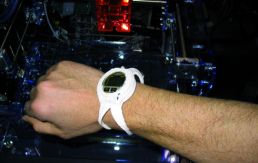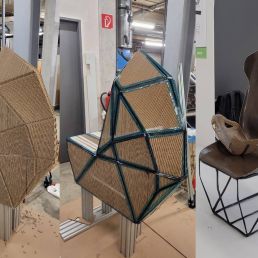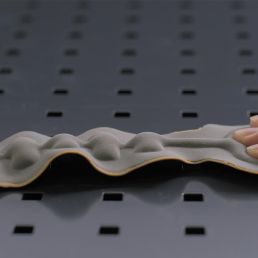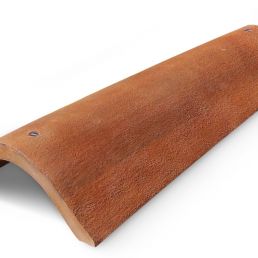My own Factory
Fabbing for Design and Architecture
form 219
March/April 2008
publisher
Birkhäuser (Basel)

There have been discussions for some time now on what opportunities digital home factories, so-called fabbers, will have to offer. Now the first appliances are coming on the market that any design office can afford.
Fabbers are nothing other than an advance on rapid prototyping, a generative technology that has been used since the 1990s to make prototypes and simple tools. The underlying idea is not to make components by removing material, as with milling or lathing, but by adding material, layer after layer. The great flexibility offers designers immense liberties in shaping products and components. In fact, the future experts at z_punkt debated during their conference on “Rethinking Business” in Essen a trend that could revolutionize our current understanding of industrial mass production. Whether things will ever progress to the point where each household can use a fabber to produce all the items it needs in everyday life in keeping with personal taste remains to be seen. But in recent months immense steps forward have been made in generative processes. Thus, Cornell University has posted on the Internet instructions for using a fabber including the software and the first test data – for just short of 2,000 euros creative professionals can now realize the dream of a digital factory in their own offices. Anyone not wanting to dirty their own hands will have to wait a bit. Because Desktop Factory has announced that in a few weeks’ time it will be launching a 3D printer on the market for about 3,400 euros – you can already order it through the Internet.
Philosopher Frithjof Bergmann assumes that such 3D printers will bridge the gap between highly industrialized and less developed societies: Wage laborers will then morph into high-tech producers – anywhere in the world. The utopia of a “technological democracy” sounds tempting. Hard to imagine the scenarios that will arise if the current research projects at RWTH Aachen and the University of Massachusetts on processing human tissue using 3D printers should prove successful. Bones, ligaments and cartilage could then be printed and individually adapted to the person’s body. “To manufacture a functioning organ we need first and foremost to understand how the cells communicate with each other before we get any further,” say the scientists. So it will be a little while yet …
Until then it’s probably best to stay with the components for chocolate. You can choose between bitter and sweet chocolate on fabathome.org and then shape any number of things from the choice. Enjoy!
image source: Fab@Home
Ecoblaq molecular wood colours
23 March 2024
Ecoblaq is a molecule manipulation method, a natural chemical reaction, making…
Natural fiber reinforced car seat
22 October 2023
The focus of the project "Design for Recycling" is a seat shell that is made…
MotorSkins morphing textiles
19 April 2022
Berlin based start-up MotorSkins designs and produces textiles with embedded…
3D Pioneers Challenge 2022
15 December 2021
The 3D Pioneers Challenge 2022 adresses tech pioneers who pave the way for…
IGNIS – Light from waste heat energy
12 August 2020
The availability of affordable, independent and, above all, clean electrical…
Brake disc with reduced fine dust
21 April 2021
Fine dust endangers our health. One of the main sources is traffic, especially…
Texoversum
15 July 2023
With the "Texoversum", Reutlingen University has put into operation a training…
Invisible Terracotta Solar Rooftile
10 May 2023
The family-run business Dyaqua has developed a technology to integrate a…
Xarvio – Digital Farming
8 January 2021
BASF Digital Farming GmbH has received the renowned Crop Science Award for the…








